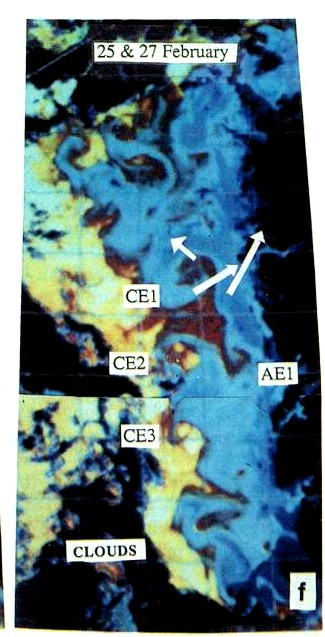OC4331-Mesoscale
Oceanography
Final Project Summary
Topic
AreaFinal Project Summary
Eddies in the Norwegian Coastal Current
Project Team Member
LT Robert Witzleb, USN
Major Findings
Eddy
formation in the Norwegian Trench is the result of barotropic as well as
baroclinic influences. The combination of lagrangian drifter data,
Acoustic Doppler Current Profiler (ADCP) data, SeaSoar towed CTD data,
and moored current meter data allowed extensive study of cyclonic and anti-cyclonic
eddies which had been targeted by high resolution Infrared Imagery.
Bathymetry
was found to be critical in eddy formation. Steep
trench walls coupled with decreasing depth to the South proved instrumental
in directing warmer-saltier Atlantic Water (AW) eastward where it encountered
fresher-colder Skaggerack water flowing North in the Norwegian Coastal
Current (NCC). Data collected
was used to resolve background flow in addition to perturbations in order
to resolve the barotropic (resulting from the horizontal velocity shear)
and the baroclinic (resulting from density variations) components. The
thermal wind relation was used to compare observed density gradients with
mathematically calculated quantities required for the measured flow.
Finally,
a modeling experiment was undertaken in attempt to mathematically validate
observed features in the NCC. Results
were encouraging based on the relative ease with which the Norwegian Trench
could be modeled due to known bathymetry. A
well-constructed domain coupled with various boundary conditions produced
numerical representations which agreed with features observed empirically.

Figure 1 IR Imagery used to target eddies during experiment.

Figure 2. Diagram of mean circulation which results in eddy formation
in the Norwegian Trench.
References
| This is a government-maintained internet site. Please read the U.S. Navy web page disclaimerand the dislaimer regarding external links. |
|